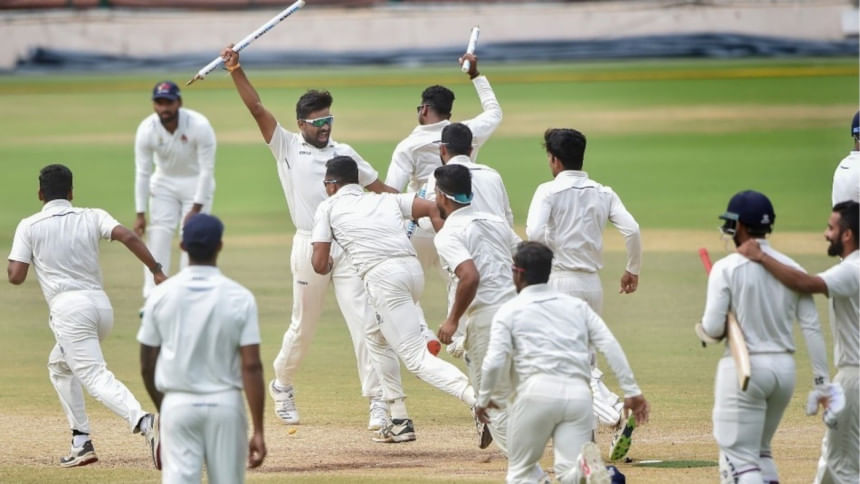Red-ball cricket creates the base for quality in India

T20 cricket is big in India and IPL, India's T20 franchise league, is the most-successful around the world. Yet, India are a scary good Test team just because of its pool of players and because the seriousness around Test cricket has been ingrained. Even the IPL, the biggest of brands, is used to filter money through to states to develop Test cricket.
In Gwalior, there are state association academies that are all integrated to the entire cricket structure of Madhya Pradesh.
Madhya Pradesh has 52 divisions which are divided among 10 revenue boards. The Board of Control for Cricket in India (BCCI) ensures that cricket is played to the maximum and all revenue boards have their own grounds, with at least two dressing rooms being the bare minimum available.
The Madhya Pradesh Cricket Association (MPCA) runs from Indore and even during the first T20I between Bangladesh and India in Gwalior, members from Indore -- one of MP's revenue boards -- were present to oversee proceedings.
BCCI tournaments run through September till March and MPCA begins its tournament from November onwards, in line with BCCI. The MPCA calendar itself has nine tournaments such as M.Y. Memorial Trophy, Madhavrao Scidia Trophy or J.N Bhaya Trophy, which is played in T20 format. There is no secret recipe here for creating talents.
Kuldeep Sen, who made his name in the 2022 IPL or the likes of Avesh Khan and Rajat Patidar and Venkatesh Iyer are players who have come through the MPCA grind. There is a central academy in Indore and the academies in revenue boards directly report to the central academy.
India's cricket structure was not always so organised. What changed in the last decade?
"We are giving enough opportunities at grassroots level. BCCI is conducting U-16, U-19, U-22 and senior tournaments. So we go through our own tournaments on the same lines. Camps are regularly held in academies so players get chance to improve. The coaching staff move across the revenue boards to seek talent," Sanjiv Rao, secretary at MPCA, told The Daily Star.
"Camps are held at revenue boards for district players and also players from the headquarters [Indore]. In each age-category, we have 30-40 probables who are sent to central academy for camps. From the basis of camps and tournaments throughout the year, the final 20 are selected in age category for the state team, in this case the MPCA," he added.
There is huge competition for places. One BCCI official informed that some 30,000 players filter through the system in MPCA alone. Even players who have crossed U-22 level remain in focus if they have not made state team as they get to play in inter-divisional tournaments.
But for the BCCI, red-ball cricket takes precedence. IPL generates huge interest in the country for youngsters and the BCCI steers them first through red-ball doctrine.
"Red-ball requires hard work and patience. Youngsters are more inclined towards white-ball cricket. But we have a rule here. Until U-19 levels, we do not allow them to play T20 cricket. We want to create that base of technically correct red-ball players. So in U-19, we have fifty-over tournament but not T20s," Sanjiv said.
So the next time one looks at a perfectly-aligned head position in congruence with fluent bat speed from an Indian star in a T20I game, it is being developed through red-ball hurdle.
BCCI officials informed that even money from IPL, such as 40,000 crore INR in broadcast rights, filter through to state associations to develop the base. Building infrastructure has not been a problem as BCCI provides associations with at least 50 crore INR per year for maintenance and new infrastructure. Thus selectors, coaches and a huge pool of players make India a huge machinery for producing top-notch cricketers.

 For all latest news, follow The Daily Star's Google News channel.
For all latest news, follow The Daily Star's Google News channel. 



Comments